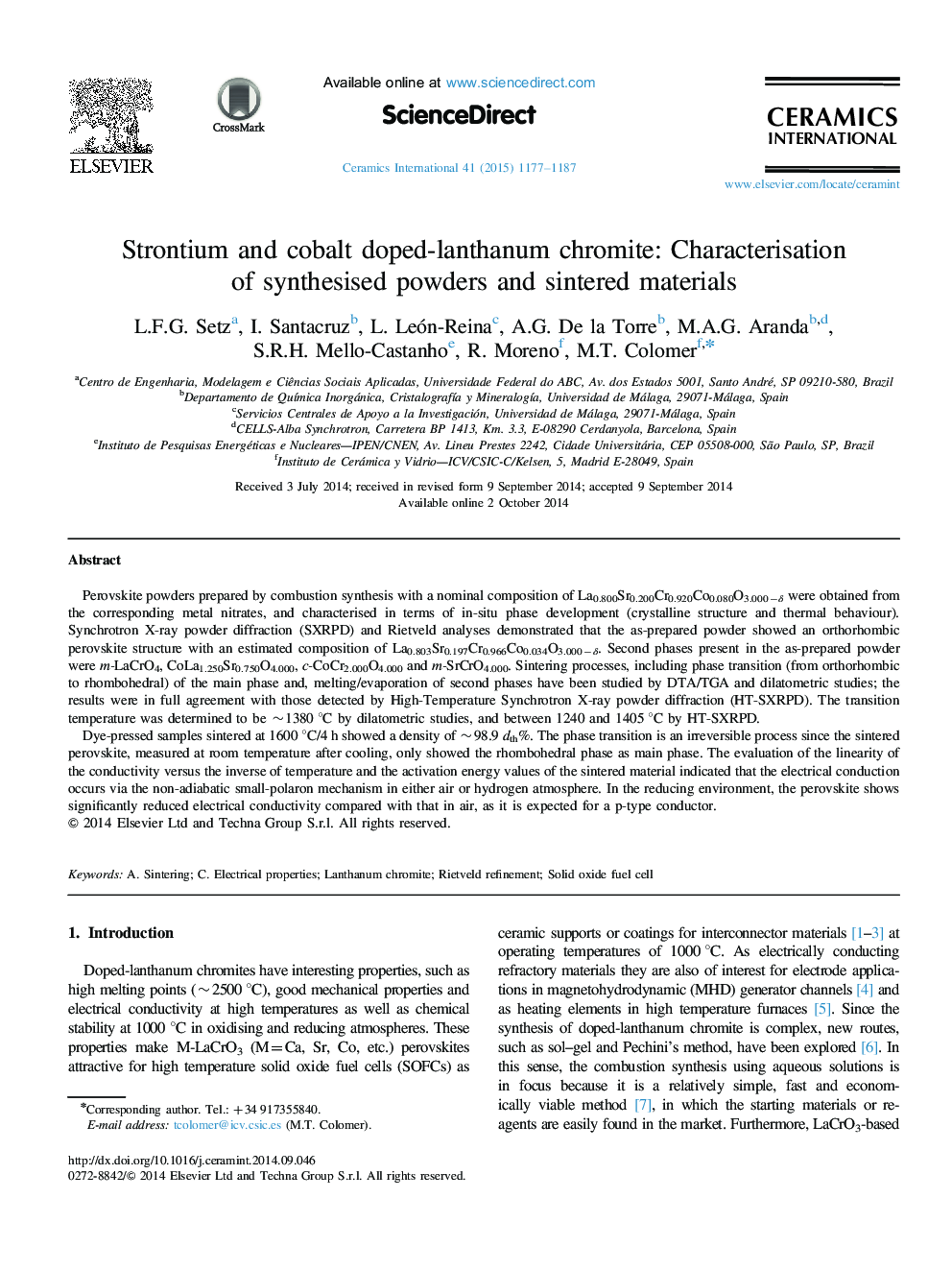| کد مقاله | کد نشریه | سال انتشار | مقاله انگلیسی | نسخه تمام متن |
|---|---|---|---|---|
| 1460815 | 989610 | 2015 | 11 صفحه PDF | دانلود رایگان |
Perovskite powders prepared by combustion synthesis with a nominal composition of La0.800Sr0.200Cr0.920Co0.080O3.000−δ were obtained from the corresponding metal nitrates, and characterised in terms of in-situ phase development (crystalline structure and thermal behaviour). Synchrotron X-ray powder diffraction (SXRPD) and Rietveld analyses demonstrated that the as-prepared powder showed an orthorhombic perovskite structure with an estimated composition of La0.803Sr0.197Cr0.966Co0.034O3.000−δ. Second phases present in the as-prepared powder were m-LaCrO4, CoLa1.250Sr0.750O4.000, c-CoCr2.000O4.000 and m-SrCrO4.000. Sintering processes, including phase transition (from orthorhombic to rhombohedral) of the main phase and, melting/evaporation of second phases have been studied by DTA/TGA and dilatometric studies; the results were in full agreement with those detected by High-Temperature Synchrotron X-ray powder diffraction (HT-SXRPD). The transition temperature was determined to be ~1380 °C by dilatometric studies, and between 1240 and 1405 °C by HT-SXRPD.Dye-pressed samples sintered at 1600 °C/4 h showed a density of ~98.9 dth%. The phase transition is an irreversible process since the sintered perovskite, measured at room temperature after cooling, only showed the rhombohedral phase as main phase. The evaluation of the linearity of the conductivity versus the inverse of temperature and the activation energy values of the sintered material indicated that the electrical conduction occurs via the non-adiabatic small-polaron mechanism in either air or hydrogen atmosphere. In the reducing environment, the perovskite shows significantly reduced electrical conductivity compared with that in air, as it is expected for a p-type conductor.
Journal: Ceramics International - Volume 41, Issue 1, Part B, January 2015, Pages 1177–1187
